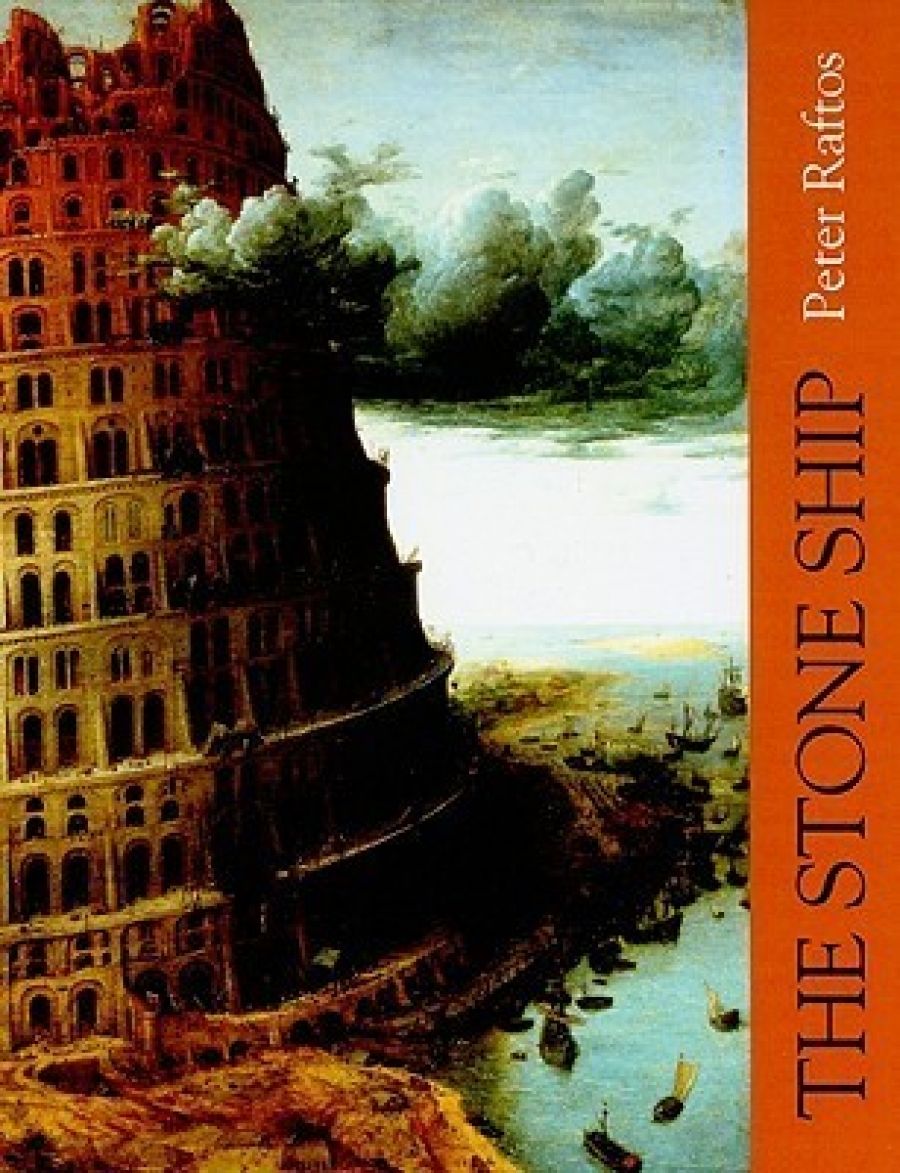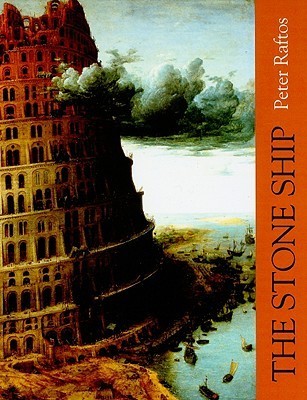
- Free Article: No
- Contents Category: Fiction
- Review Article: Yes
- Article Title: Retro-future
- Online Only: No
- Custom Highlight Text:
The Stone Ship is Peter Raftos’s first book, and one of the first three books released by Sullivan’s Creek, an imprint of Pandanus Books. The Sullivan’s Creek Series ‘seeks to explore Australia through the work of new writers, with a particular encouragement to authors from Canberra and the region’ and ‘aims to make a lively contribution to scholarship and cultural knowledge’. Raftos, ‘a web developer, an academic-in-training and a journalist’, lives in Canberra and works at the Australian National University. His novel, set in an imagined time and place, doesn’t so much explore Australian universities as the absurdity of all universities. As for ‘a lively contribution to cultural knowledge’, I’m not sure what that looks like, but The Stone Ship reminded me of Terry Gilliam’s wonderful film Brazil (1985). Both are set in a ‘retro-future’ ruled by huge, incomprehensible bureaucracies, whose only work seems to be perpetuating their systems and inflicting arbitrary cruelties on unsuspecting and trusting citizens.
- Book 1 Title: The Stone Ship
- Book 1 Biblio: Pandanus, $29.95pb, 217pp
- Book 1 Cover Small (400 x 600):

- Book 1 Cover (800 x 1200):

Shipton is the protagonist and narrator of the novel. We meet him in self-imposed exile on the Isle of Goats. He has left his hometown after the death of his wife in childbirth, and ‘in leaving, [he] spoke and acted to [his] family and in-laws in such a way that [he] could not return’. Shipton has come to the Isle of Goats, he tells us, ‘to be alone, to watch the sun rise and the sun set. To be bored, to sit under the cypresses and hate the world, or myself, which amounted to the same thing. And then to kill myself.’
But Shipton is a reluctant suicide, finally admitting that ‘I did not want to die, even if I did not want to live’. As he stares into ‘the abyss of [his] non-existence’, he meets Finch. Finch has successfully killed himself, but has not found the release he hoped for in death. He wants to take revenge on ‘the bastard who is responsible for [him] being a disembodied spirit stuck on an island of goats and marmots’. Finch convinces Shipton that a widow’s life is an unrelieved, gruelling limbo – ‘Can’t live, can’t die. Can’t go on, can’t go back’ – and that, given the circumstances, he may as well come into Finch’s service and travel ‘to a distant land in order to kill a complete stranger on behalf of a ghost’.
Shipton accepts, although he is not persuaded by Finch’s argument. Their destination is the University, a building of ‘impossible architecture’ cast in ‘eternal gloom’ by the ‘grandfather of all thunderheads’. Finch accompanies him on the journey, alternately cajoling Shipton when his resolve wavers and bullying his servant as Shipton becomes increasingly unhappy at being ‘pushed, prodded and moved at the whim of others’.
Through bribery, good luck and patience, Shipton gets into the University, with the promise of employment. As he makes his way through the University’s physical and bureaucratic labyrinth, Shipton gets lost and begins a series of adventures, meeting a range of enigmatic, eccentric characters. The vast Library at the heart of the University is a series of concentric circles, where the ‘innermost Circles of knowledge belonged to disciplines without names’. The order of the outer Circles is constantly changing, and the librarians are given to murderous riots as they reshelve books. Shipton gets caught in such a riot as the Circle of Natural History swaps places, and prestige, with the Circle of the Humanities, and, in the panic, finds himself deep within the Library, heading towards the underlake, where the dreaded undermonster lives. Shipton’s violent encounter with the undermonster brings him to the Sanatorium, where patients play ‘Arcane Starfish’, an endless, unceasing card game, and have ‘a constant intake of oranges’. Shipton leaves the Sanatorium to take up his post with the manic Professor Margolis, a ‘Professor of Information Theory, with interests in Informatics, Informology, Informography and Applied Stuff’. His service with Margolis brings him closer to exacting Finch’s revenge and to the beginning of his own opportunity for salvation.
The Stone Ship is at its best when Raftos writes about the absurd structure, rules and characters of the University. There are some clever ideas – watch out for the village of Drab, the Best of All Possible Worlds, ‘a borderline shitheap’, the Place of Dead Books and the ancient Chancellor, ‘a shrivelled ball of ineffectual spite in a bath chair’ – and Raftos’s language is an entertaining blend of jargon from the nineteenth and twentieth centuries, and from the imagined futuristic world of the University. This amusing, cynical examination of institutions, knowledge, trust, purpose and memory is reminiscent of work by Kafka, Borges, Gilliam and the Coen Brothers. It is a fun read, alive with Raftos’s pleasure in creating this bizarre, horribly familiar world, and filled with well-executed, interesting ideas.


Comments powered by CComment